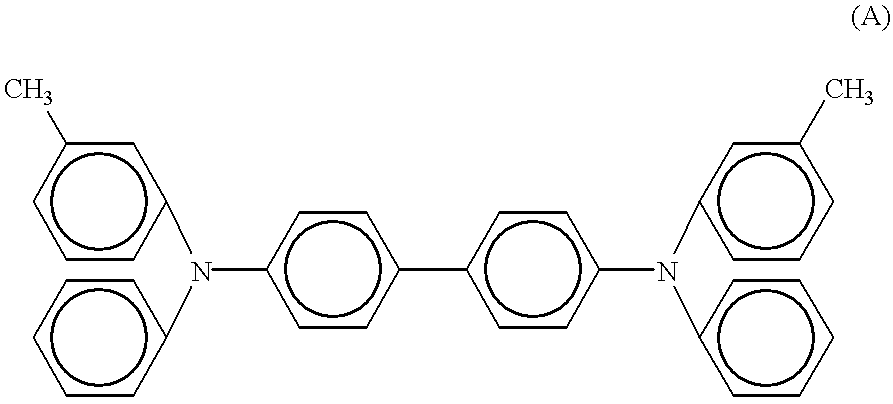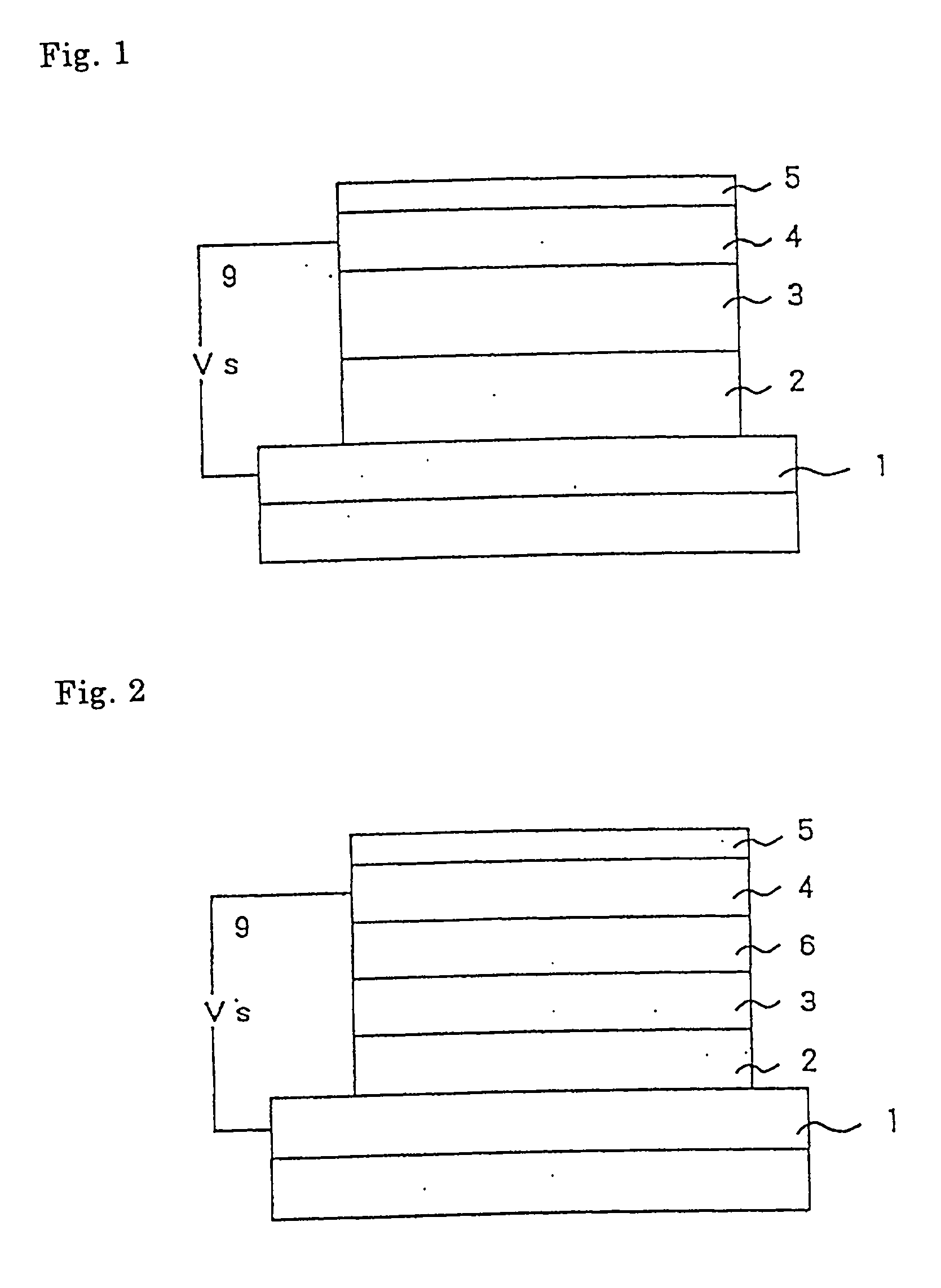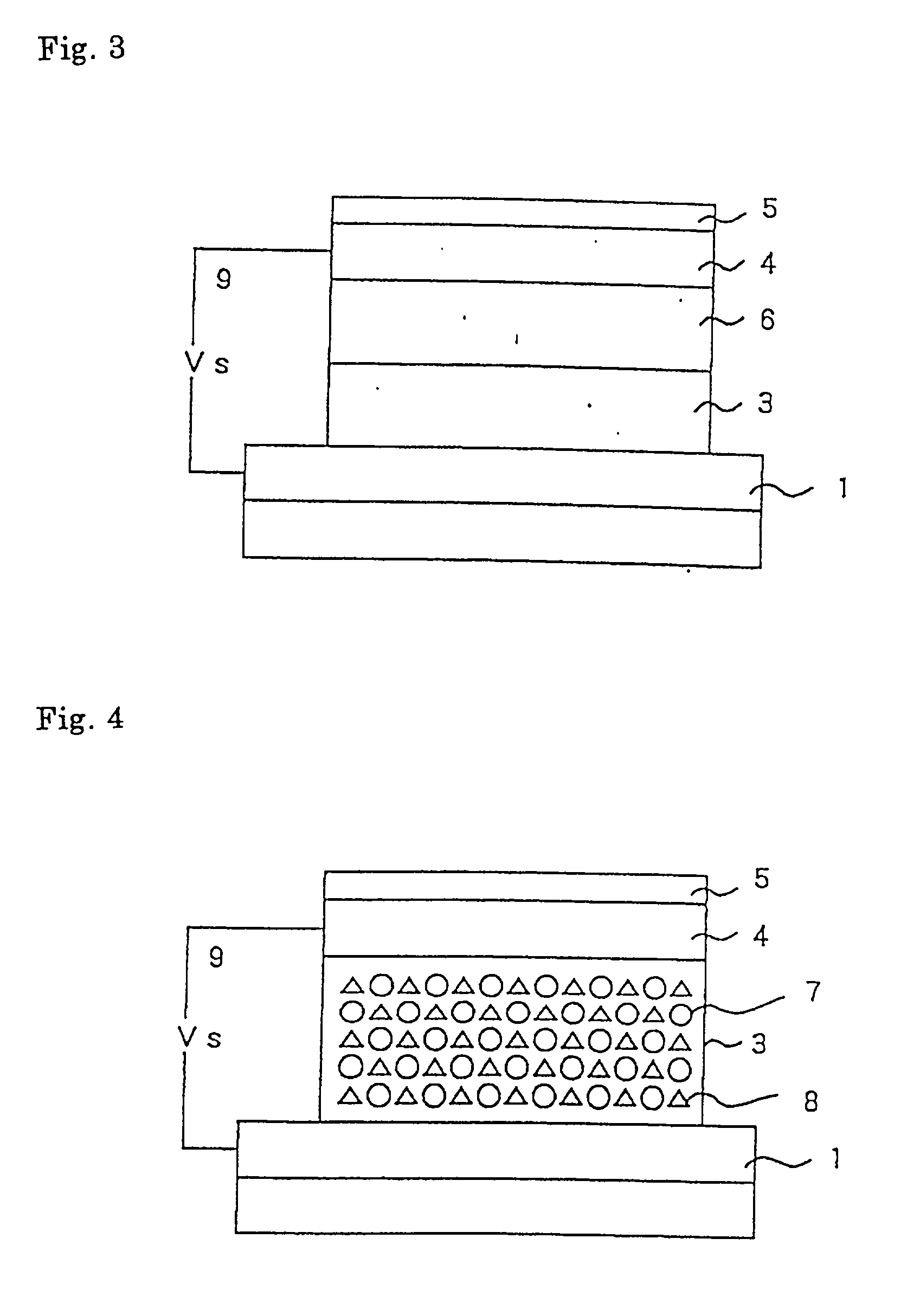Organic electroluminecent element and method of manufacturing same
a technology of electroluminecent elements and organic electroluminecent elements, which is applied in the direction of electroluminescent light sources, coatings, electric lighting sources, etc., can solve the problems of unsuitable practical use, inadequacies in storage stability and stability, etc., and achieve low luminescence starting potential and stable luminescence characteristics
- Summary
- Abstract
- Description
- Claims
- Application Information
AI Technical Summary
Benefits of technology
Problems solved by technology
Method used
Image
Examples
example 2
[0116] In this example, a manufacturing apparatus is used having chambers 100 and 101 of integrated construction, and chambers 102 and 103 uniformly constructed, said apparatus being identical to that used in example 1. A plasma washing mechanism is provided within the dry washing chamber 101.
[0117] The ITO membrane of a commercial glass substrate S provided with an ITO membrane (Geomatechn Co. Ltd.) was thoroughly cleaned with distilled water and acetone in ultrasound cleaning processes lasting 20 min, respectively, and the interior of chamber 100 was evacuated to a vacuum of less than 1.0.times.10-5 Torr via pump P.
[0118] Then, while maintaining the vacuum state, HI / Ar gas mixture was introduced to attain a vacuum of 2.0.times.10-2 Torr within chamber 100, and dry etching was performed for 3 min on substrate S via metal mask 110 at a voltage of 1 W / cm2. Next, etching was repeated at 20% of the previous output at a pressure of 0.1 Torr. The gas flow rate was 300 sccm.
[0119] There w...
example 3
[0125] Example 3 uses the manufacturing apparatus with chambers 100-103 of integrated construction, as shown in FIG. 7.
[0126] Just as in example 2, patterning and plasma washing of ITO substrate S was performed n chambers 100 and 101, and after dry washing via plasma process, the substrate S was moved into chamber 102 without exposure to air. Then, a triphenylamine dielectric represented by chemical structural formula A was vacuum deposited in a vacuum of 1.0.times.10-5 Torr to a layer thickness of 65 nm at a vacuum deposition speed of 5 A / sec to produce a hole injecting / transporting layer.
[0127] Then, while similarly maintaining the vacuum state within the chamber, tris(8-hydroxyquinoline) aluminum complex was vacuum deposited to a layer thickness of 65 nm at a rate of 6 A / sec to form a luminescing layer on substrate S.
[0128] The substrate S was then transported into chamber 103 without breaking the vacuum state, and a mixture of Mg and Ag was vacuum deposited together at a ratio o...
example 4
[0130] Example 4 uses a modification of the manufacturing apparatus shown in FIG. 9.
[0131] After glass substrate S was washed by ultrasonic cleaning using distilled water and acetone for 20 min, respectively, the pressure in the chamber was reduced to a vacuum of less than 1.0.times.10-5 Torr.
[0132] ITO alloy was deposited by spattering method at a deposition rate of 5 A / sec to form a layer 200 nm in thickness as a positive electrode. Then, plasma washing, organic compound layer, and negative electrode were performed in the same manner as described in example 3.
[0133] The organic electroluminescent element was manufactured via the aforesaid processes.
PUM
 Login to View More
Login to View More Abstract
Description
Claims
Application Information
 Login to View More
Login to View More - R&D
- Intellectual Property
- Life Sciences
- Materials
- Tech Scout
- Unparalleled Data Quality
- Higher Quality Content
- 60% Fewer Hallucinations
Browse by: Latest US Patents, China's latest patents, Technical Efficacy Thesaurus, Application Domain, Technology Topic, Popular Technical Reports.
© 2025 PatSnap. All rights reserved.Legal|Privacy policy|Modern Slavery Act Transparency Statement|Sitemap|About US| Contact US: help@patsnap.com



